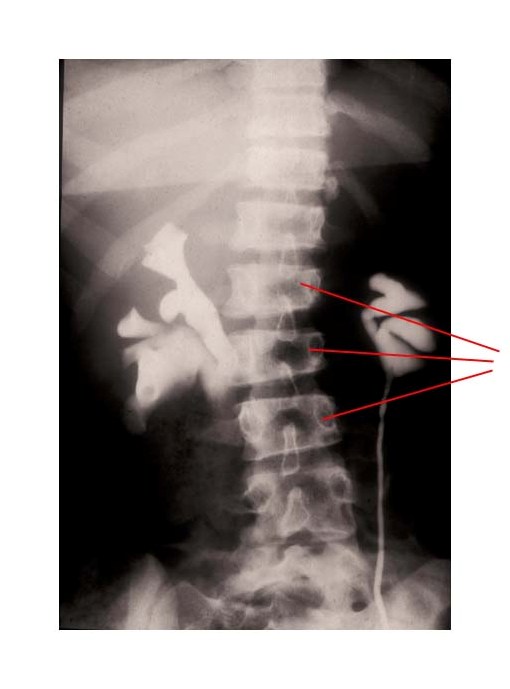Musculoskeletal
Hypoplasia
Hypoplasia means "reduced growth" of normal structures within the radiation therapy (RT) field.
The growing musculoskeletal system is damaged by RT and chemotherapy.
Physeal injury:
RT is especially damaging to the growth plate chondrocytes.
Low doses of RT have the ability to:
- Reduce cell mitosis
- Promote premature terminal differentiation
- Promote apoptosis
- Disrupt cyto-architecture
If the total dose is less than 20 Gy, surviving chondroblast clones repopulate the physis (though this is not always complete).
Mechanism of RT related damage is decrease in mRNA expression of PTHrP which is an important stimulus for mitosis of chondrocytes.
Osteoblasts are damaged only by high dose RT.
RT increases bone vascularity especially in metaphysis and this increases bone resorption leading to osteoporosis.
The epiphyseal plate is very sensitive to RT:
In general terms:
- Less than 10 Gy -> mild long-term changes
- 10 - 20 Gy -> partial growth arrest of the epiphysis
- 20 Gy and over -> complete growth arrest
The younger the child, the higher the dose of RT then the greater the effect will be.
Muscle and soft tissue injury:
All the growing tissues in the RT field are affected - not just bones. The muscles and soft tissues are also affected and their growth is reduced.
Consequences of injury:
Physeal injury and reduction in growth of surrounding muscles leads to:
- Spinal abnormalities
- Limb length discrepancies
- Joint deformities
The plain film below (taken as part of an IVP examination) shows a scoliosis secondary to previous RT therapy. The red lines point to the "hypoplastic" or under-developed half of the vertebral body included in the treatment field. The edge of the RT field went through the middle of the vertebral body. The bone outside the RT field grew normally - leading to the scoliosis.

